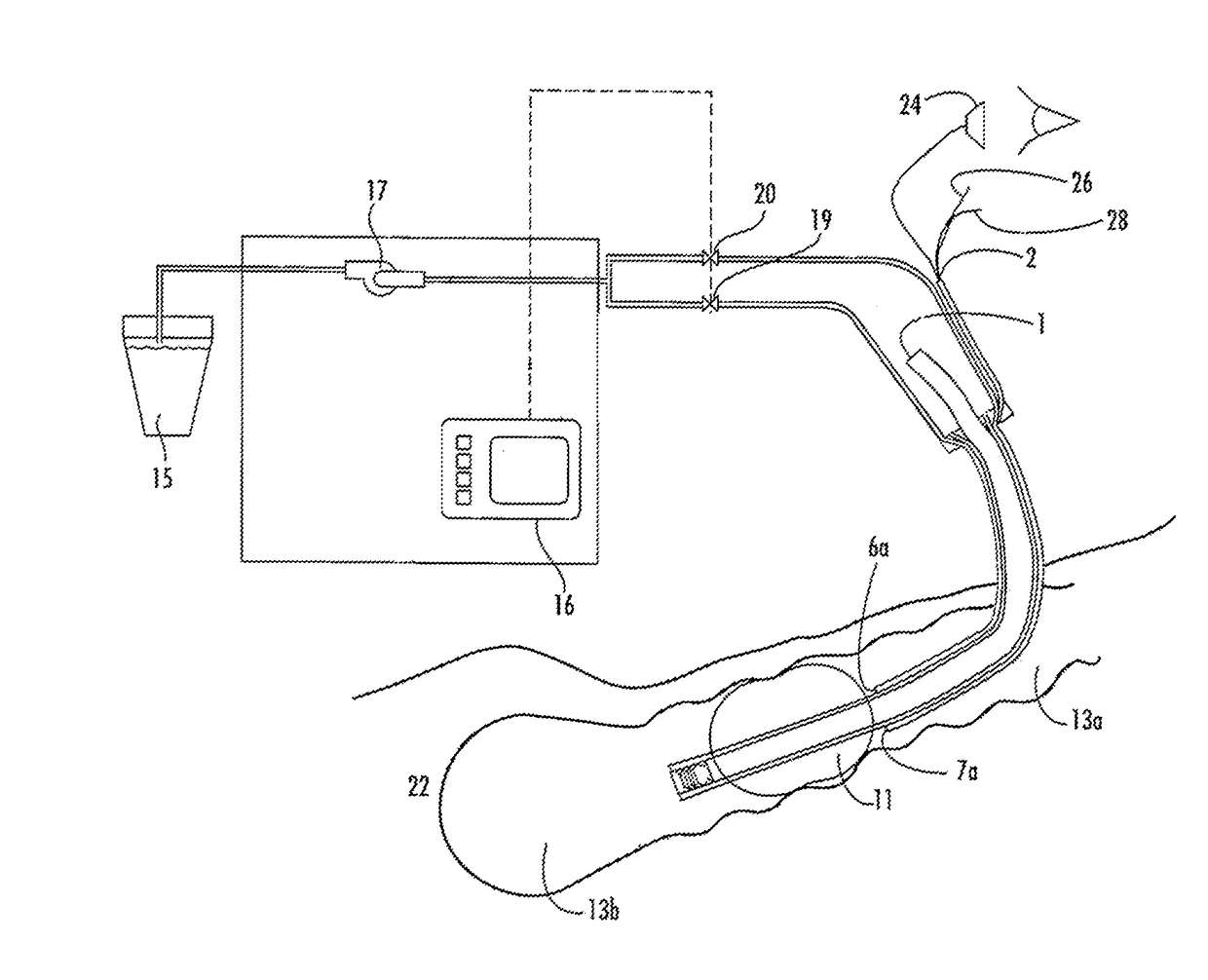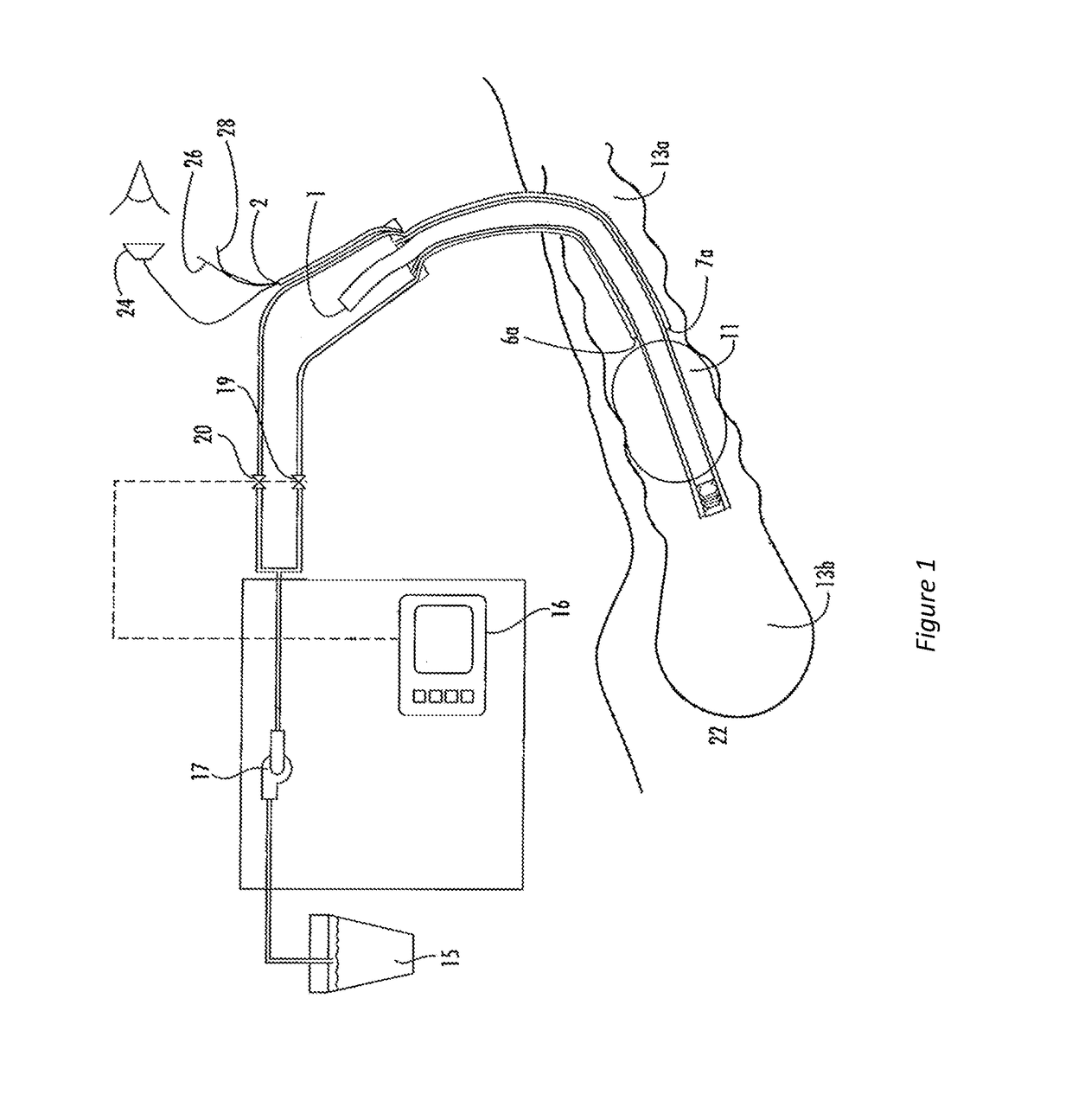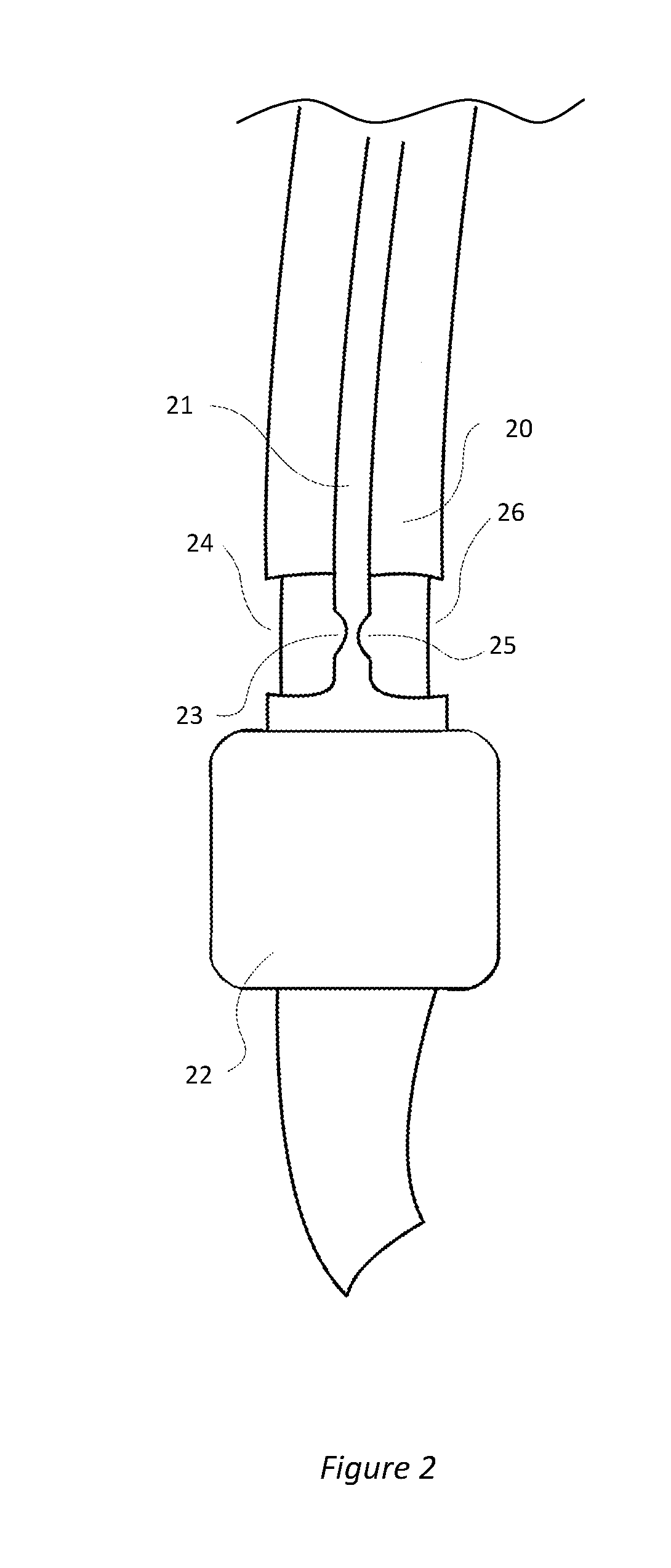Non-invasive method of diagnosing dysphagia in patients having a tracheostomy
a tracheostomy and non-invasive technology, applied in the field of dysphagia diagnosis and evaluation, can solve the problems of dysphagia going undiagnosed and untreated, limited awareness, and difficulty in swallowing of oropharyngeal dysphagia, and achieve the effect of high accuracy and well-tolerated
- Summary
- Abstract
- Description
- Claims
- Application Information
AI Technical Summary
Benefits of technology
Problems solved by technology
Method used
Image
Examples
Embodiment Construction
[0009]Embodiments of the present invention will now be described with reference to the above-identified drawings. However, the drawings and the description herein of the invention are not intended to limit the scope of the invention. It will be understood that various modifications of the present description of the invention are possible without departing from the spirit of the invention. Also, features described herein may be omitted, additional features may be included, and / or features described herein may be combined in a manner different from the specific combinations recited herein, all without departing from the spirit of the invention.
[0010]The method of the invention makes use of a tracer which is any non-toxic substance that can be readily detected at low concentrations. Suitable materials may be dyes or leuco dyes, isotopic tracers, antigens, or enzymes, for which sensitive methods of detection are well known in the art. The most common, and most preferred tracer is Evans ...
PUM
 Login to View More
Login to View More Abstract
Description
Claims
Application Information
 Login to View More
Login to View More - R&D
- Intellectual Property
- Life Sciences
- Materials
- Tech Scout
- Unparalleled Data Quality
- Higher Quality Content
- 60% Fewer Hallucinations
Browse by: Latest US Patents, China's latest patents, Technical Efficacy Thesaurus, Application Domain, Technology Topic, Popular Technical Reports.
© 2025 PatSnap. All rights reserved.Legal|Privacy policy|Modern Slavery Act Transparency Statement|Sitemap|About US| Contact US: help@patsnap.com



